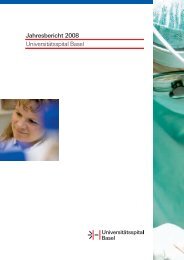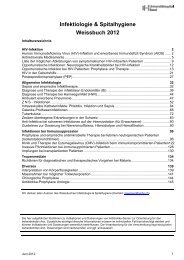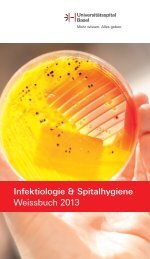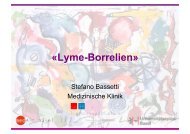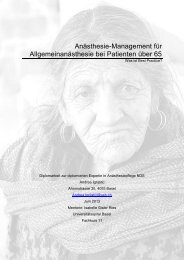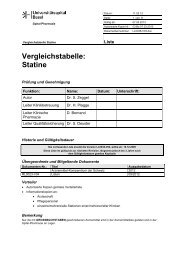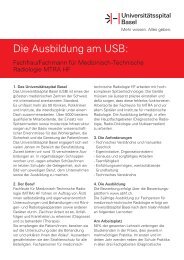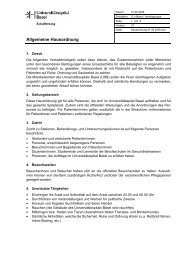Transmucosal Nasal Drug Delivery: Systemic Bioavailability of ...
Transmucosal Nasal Drug Delivery: Systemic Bioavailability of ...
Transmucosal Nasal Drug Delivery: Systemic Bioavailability of ...
You also want an ePaper? Increase the reach of your titles
YUMPU automatically turns print PDFs into web optimized ePapers that Google loves.
4. Compounding <strong>of</strong> nasal midazolam preparations<br />
Due to the limited nasal capacity the whole midazolam dose has to be administered within 50 µl to<br />
400 µl. To deliver therapeutic midazolam doses, nasal preparations with midazolam concentration,<br />
exceeding solubility <strong>of</strong> midazolam in water need to be developed. For example, to deliver the dose<br />
<strong>of</strong> 3 mg midazolam by instilling a volume <strong>of</strong> 100 µl, concentrations <strong>of</strong> 30 mg/ml midazolam are<br />
required. Suitable solvents and solubilizers are needed to compound preparations for nasal<br />
midazolam delivery. Table 4-1 lists some solubilizers, which have been described in literature to<br />
solubilize midazolam for nasal administration.<br />
Table 4-1: Different approaches to solubilize midazolam for nasal administration<br />
Solubilizer<br />
Propylene glycol 26%,<br />
benzyl alcohol 1%<br />
Midazolam<br />
concentration<br />
Comment<br />
Reference<br />
27.8 mg/ml 2% propylene glycol is isotonic with serum [Knoester<br />
et al. 2002]<br />
β-cyclodextrin 10 mg/ml Less nasal irritation compared with nasal<br />
administration <strong>of</strong> Dormicum ® for injection<br />
5mg/ml (Roche, Basel, Switzerland)<br />
[Roel<strong>of</strong>se<br />
et al. 2000]<br />
Sulfobutylether-βcyclodextrin<br />
(Captisol ® ,<br />
CyDex, USA)<br />
30 mg/ml, pH 3 Different cyclodextrin derivates were<br />
investigated to solubilize midazolam. Above<br />
pH 5 the maximal midazolam concentration is<br />
5 mg/ml.<br />
[L<strong>of</strong>tsson<br />
et al. 2001]<br />
4.2.2 Bio- and mucoadhesive excipients<br />
Bioadhesion and mucoadhesion describe adhering <strong>of</strong> synthetic or natural macromolecules to<br />
biological or mucosal surfaces. Most biological surfaces <strong>of</strong> interest for drug administration are<br />
mucosal surfaces and the epithelial cells are covered with a mucus layer. Mucus is a complex<br />
hydrated gel-like material containing the large glycoprotein mucin. The term mucoadhesion<br />
describes molecules binding to a mucus layer, whereas bioadhesion describes the direct<br />
interaction <strong>of</strong> macromolecules with the cell surfaces. But, these two mechanisms <strong>of</strong> adhesion can<br />
hardly be differentiated; furthermore, many bioadhesives interact with biological surfaces by a<br />
combination <strong>of</strong> these two mechanisms. The term specific bioadhesion refers to specific<br />
interaction with defined structures. Specific bioadhesion is applied to target defined structures <strong>of</strong><br />
the cell surface [Woodley 2001].<br />
The mechanism <strong>of</strong> non-specific bioadhesion is supposed to result form electrostatic interaction <strong>of</strong><br />
negatively charged cell surfaces and cationic macromolecules (e.g., chitosan see also chapter 4.4).<br />
For anionic bioadhesive molecules, the interaction with the biologic surface is composed <strong>of</strong><br />
hydrophobic interaction, H-bonds, and Van der Waals interactions.<br />
Addition <strong>of</strong> bioadhesive excipients to nasal preparation elongates the nasal residence time <strong>of</strong><br />
nasally delivered preparations. The prolonged residence time favors, complete release <strong>of</strong> the drug<br />
from the preparation and thereby efficient transmucosal absorption [Dondeti et al., 1996].<br />
Katja Suter-Zimmermann Page 32 <strong>of</strong> 186 University <strong>of</strong> Basel, 2008




